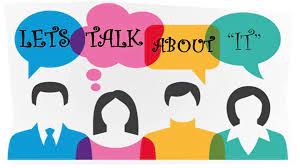Where is coding used?
Computers and their applications have evolved quite a lot since the invention of the first-ever programmable computers in the 1940s. Initially, computers were extensively used in wars to break cryptic messages, or calculate artillery projectiles, or communicate over long distances. However, with time, the use of computers and their applications started increasing, and in this article, we will explore some modem uses of programming in our day-to-day life. Some of the real-world applications of coding are
Games and gaming consoles:
Gaming consoles have been the dream of many teenagers, but how do these consoles function? All instructions given by gamers through keyboards or consoles are translated into actions with the help of code.
Building websites and apps:
Social media platforms, search engines, audio streaming platforms, and many more websites and apps we are hooked to are a result of many programmers coming together to write code such that these applications and websites can do what they are supposed to.
Traffic management:
Be it managing traffic on the road or outer space, coding allows humans to actively manage traffic movement, eliminating the need for humans to manually manage it.
Facial recognition and biometrics:
Have you ever wondered how our smartphones can instantly recognise us and unlock our devices? Thanks to the feat of programming, computers can monitor millions of data points to verify the rightful owner(s) almost instantly.
Self-driving cars:
Who is driving the car when the human isn't? How does the computer know when to drive, how to drive, and where to go? With the extensive use of technologies such as Al (artificial intelligence) and ML (machine learning), today it is possible for cars to self-drive.
Banking and insurance:
How do banking systems know, about our bank balances and interests? With computers, and programming into the picture, banking institutions can access data in real-time, eliminating redundancies and errors.
Stock markets:
With trillions of dollars being traded every day, it becomes vital to ensure that the money reaches the right people at the right time, and all of this is managed through computer programs.
Powering e-commerce sites:
How come when you place an order for your favourite gadget, it usually reaches you and not someone else? It is with the help of code and programs that millions of products are safely shipped to the right recipients.
Electronic devices:
From refrigerators and television to earphones, electronic devices are hard-coded to perform certain actions.
If the computer is a physical entity, then the program running it is its soul.
The world of computing has undergone a rapid evolution, and today humanity enjoys the power of computing and programming in almost all aspects of life. Which is why today coding is seen as one of the most desirable skills.
Picture Credit : Google
